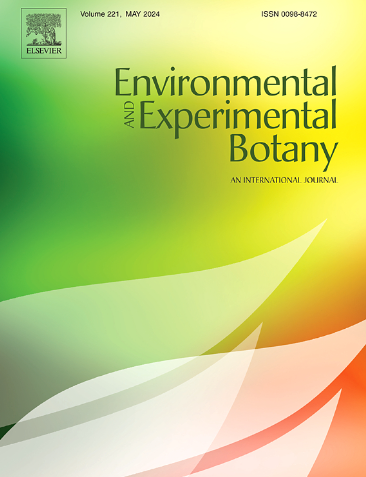用恶臭假单胞菌和新藻提高柑橘对高温强光胁迫的抗逆性。
IF 4.7
2区 生物学
Q2 ENVIRONMENTAL SCIENCES
引用次数: 0
摘要
不利的环境条件、含水层污染和化肥过度使用严重影响了农业生产,这些挑战在过去几十年里不断恶化。鉴于迫切需要更加环境可持续的农业实践,最近的研究强调了促进植物生长的根瘤菌(PGPR)作为一种生物替代品的潜力。据报道,PGPRs作为生物肥料和植物耐受性增强剂发挥作用。柑橘作为一种全球重要的水果作物,尤其受到这些环境压力因素的影响。本研究旨在探讨在高温胁迫和高光强(HSHL)联合条件下,用PGPR菌株Pseudomonas putida KT2440和Novosphingobium sp. HR1a接种克莉奥帕特拉柑桔的效果。我们的研究结果表明,接种这些菌株对HSHL条件的有害影响提供了显著的保护。接种恶臭假单胞菌和新鞘菌后,这种保护作用在表型、生理和分子等多个层面上都很明显。具体来说,我们在HSHL下观察到:(i)接种植株无叶片脱落,(ii)在非胁迫和胁迫条件下均提高了光合效率,(iii)降低了丙二醛含量,(iv)增加了过氧化氢酶活性,(v)上调了与抗逆性相关的基因(WRKY40、WRKY76和HSF30), (vi)增加了糖积累。我们的研究表明,使用恶臭假单胞菌和Novosphingobium sp.为柑橘种植提供了一种有前途的环境可持续发展的方法,特别是在减轻气候变化情景相关的负面影响方面。本文章由计算机程序翻译,如有差异,请以英文原文为准。
Enhancing citrus resilience to high temperature and intense light stress with Pseudomonas putida and Novosphingobium sp.
Adverse environmental conditions, aquifer contamination, and excessive fertilizer use have significantly impacted agricultural production, with these challenges worsening over the last few decades. Given the urgent need for more environmentally sustainable agricultural practices, recent studies have highlighted the potential of plant growth-promoting rhizobacteria (PGPR) as a biological alternative. PGPRs have been reported to function as biofertilizers and enhancers of plant tolerance to stress. Citrus, a globally important fruit crop, has been particularly affected by these environmental stressors. In this work, we aim to explore the effects of inoculating Cleopatra mandarin plants with PGPR strains Pseudomonas putida KT2440 and Novosphingobium sp. HR1a under combined conditions of heat stress and high light intensity (HSHL). Our findings demonstrate that inoculation with these strains provides significant protection against the detrimental effects of HSHL conditions. This protection is evident across multiple levels—phenotypically, physiologically, and molecularly—following the inoculation with Pseudomonas putida and Novosphingobium sp. Specifically, we observed under HSHL: (i) no leaf abscission in inoculated plants, (ii) improved photosynthesis efficiency under both non-stressed and stressed conditions, (iii) reduced malondialdehyde content, (iv) increased catalase activity, (v) upregulation of genes involved in stress tolerance (WRKY40, WRKY76, and HSF30), and (vi) increased sugar accumulation. Our study reveals that the use of Pseudomonas putida and Novosphingobium sp. offers a promising and environmentally sustainable approach for citriculture, particularly in mitigating the negative effects associated with climate change scenarios.
求助全文
通过发布文献求助,成功后即可免费获取论文全文。
去求助
来源期刊

Environmental and Experimental Botany
环境科学-环境科学
CiteScore
9.30
自引率
5.30%
发文量
342
审稿时长
26 days
期刊介绍:
Environmental and Experimental Botany (EEB) publishes research papers on the physical, chemical, biological, molecular mechanisms and processes involved in the responses of plants to their environment.
In addition to research papers, the journal includes review articles. Submission is in agreement with the Editors-in-Chief.
The Journal also publishes special issues which are built by invited guest editors and are related to the main themes of EEB.
The areas covered by the Journal include:
(1) Responses of plants to heavy metals and pollutants
(2) Plant/water interactions (salinity, drought, flooding)
(3) Responses of plants to radiations ranging from UV-B to infrared
(4) Plant/atmosphere relations (ozone, CO2 , temperature)
(5) Global change impacts on plant ecophysiology
(6) Biotic interactions involving environmental factors.
 求助内容:
求助内容: 应助结果提醒方式:
应助结果提醒方式:


